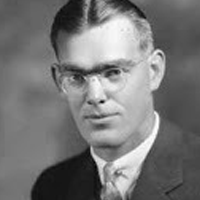W. W. Hansen
William Webster Hansen was an American physicist and professor. He was one of the founders of the technology of microwave electronics.
William Webster Hansen, American physicist who contributed to the development of radar and is regarded as the founder of microwave technology.Encouraged by his father, a hardware store owner of Danish ancestry. Hansen showed great precocity in mathematics and electricity as a child. He entered Stanford University at sixteen, where he first studied electrical engineering and later physics, in which he received the doctorate with a dissertation on X-ray excitation (1933).
After earning a Ph.D. at Stanford University in 1933, Hansen began teaching there the next year. His early pioneering work in 1937 on microwave resonant cavities was key to the development of microwave technology just before World War II. At that time he also began work, with the brothers Russell and Sigurd Varian, on the problem of detecting aircraft. Using the technology of resonant cavities, Hansen developed the basis for a new microwave vacuum tube called the klystron amplifier, which he and the Varian brothers employed in a radar system designed for aircraft detection. The klystron has been an important device for both radar and high-energy particle accelerators used in physics research. Hansen’s resonant-cavity work also led directly to the successful invention of the microwave-cavity magnetron by the British in 1940. Without Hansen’s resonant cavity there likely would have been no cavity magnetron and no microwave devices available for use in World War II, and the effectiveness of radar would have been diminished significantly. In 1941 Hansen and his research group moved to the plant of the Sperry Gyroscope Company in Garden City, New York, contributing to developments on Doppler radar, aircraft blind-landing systems, electron acceleration, and nuclear magnetic resonance. During World War II Hansen was a scientific consultant on the Manhattan Project as well as a contributor to work on radar at the Massachusetts Institute of Technology’s Radiation Laboratory. Hansen also applied his work with the resonant cavity to the design of electron accelerators used in the study of subatomic particles, though he was distracted from this pursuit by the invention of the klystron and its application to radar. After the war, as director of Stanford’s microwave laboratory, Hansen began the design of a 750-million-volt linear accelerator powered by high-power klystrons. It was completed at Stanford after his death.

W. W. Hansen
Date of Birth: 27 May 1909
Birth Place: Fresno, California, United States
Proffession: American physicist
Nationality: United states
Death: 23 May 1949, Palo Alto, California, United States


